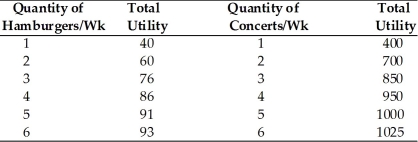Multiple Choice

-If the price of A is $3 and the price of B is $5, then, in a consumer optimum
A) the quantity purchased of B must be 60 percent of the quantity of A purchased.
B) the quantity purchased of B must be 67 percent of the quantity of A purchased.
C) the marginal utility of B must be 67 percent more than the marginal utility of A.
D) the marginal utility of A must equal 3 and the marginal utility of B must equal 5.
Correct Answer:

Verified
Correct Answer:
Verified
Q145: The real-income effect shows that<br>A) a decrease
Q146: The analysis of consumer decision making based
Q147: Which English philosopher set out to develop
Q148: A consumer has spent all of his
Q149: Suppose a family purchases 10,000 gallons of
Q151: The real-income and the substitution effects reinforce
Q152: <img src="https://d2lvgg3v3hfg70.cloudfront.net/TB5018/.jpg" alt=" -Use the above
Q153: <img src="https://d2lvgg3v3hfg70.cloudfront.net/TB5018/.jpg" alt=" -The price of
Q154: Utility theory assumes that a consumer tries
Q155: <img src="https://d2lvgg3v3hfg70.cloudfront.net/TB5018/.jpg" alt=" -Refer to the